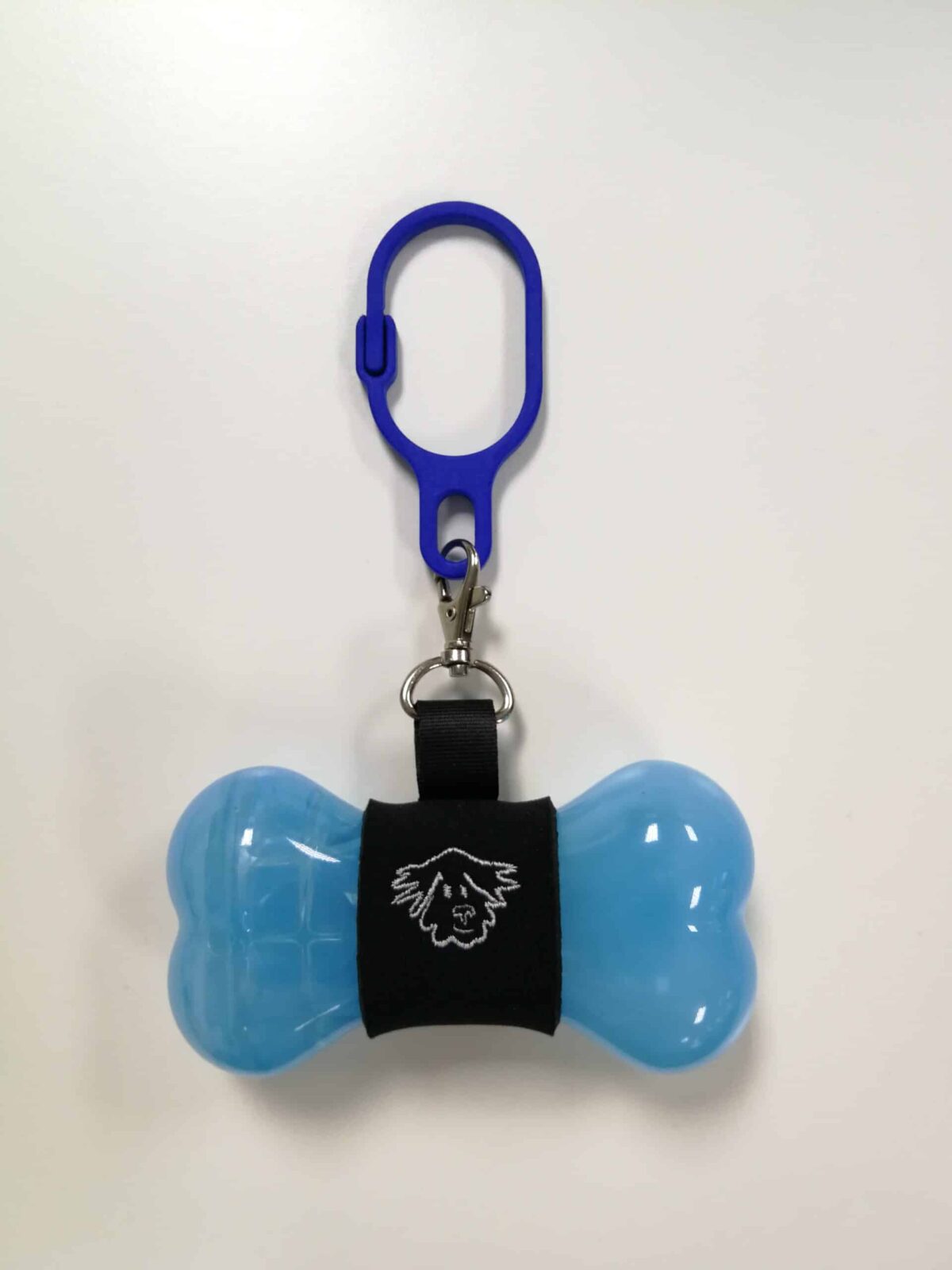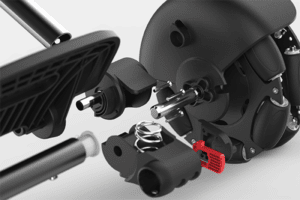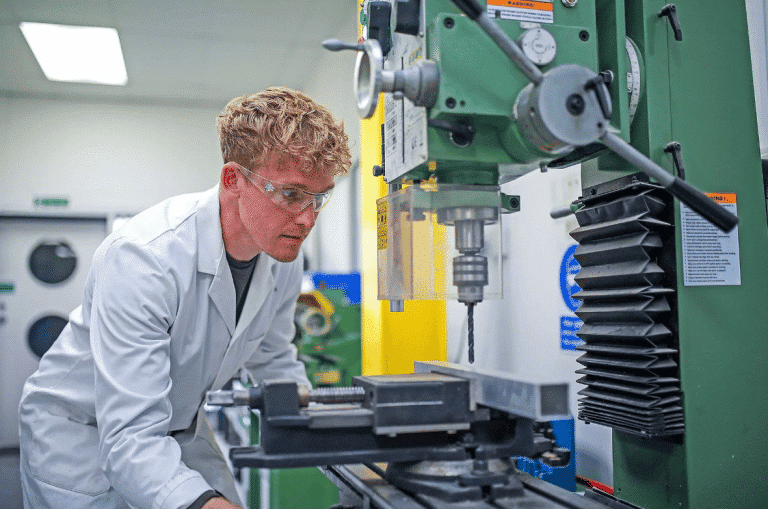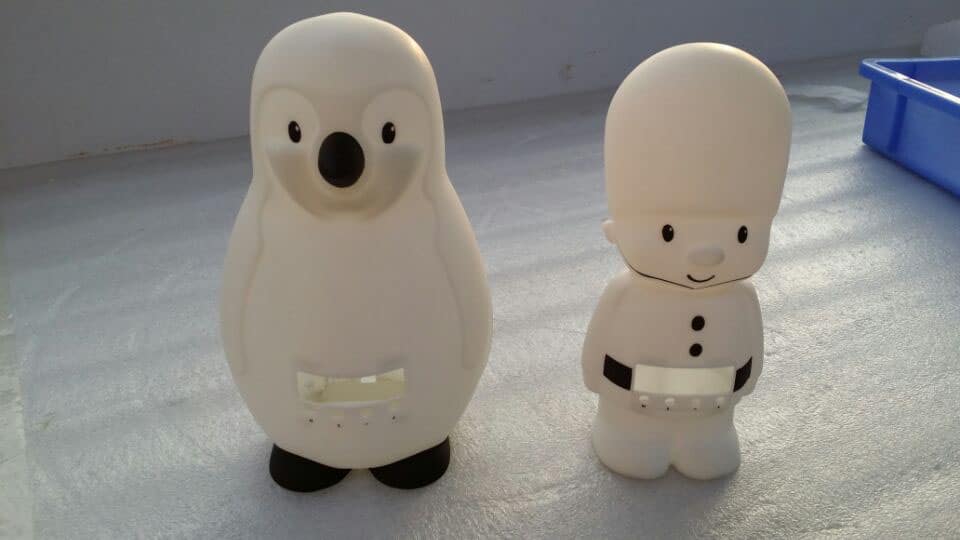Further Prototyping

The “further prototyping” service is a crucial step towards achieving a market ready product. Having refined the design in the further design for prototype stage, based on valuable feedback from initial prototypes and modification stages the further prototype allows you to build and test the refined design, striving towards the design being ready for manufacture.
Our Process
- Review design work
Any changes or feedback discussed in between the previous stage of work and starting the further prototype will be applied to CAD or design. On the hard goods side, this may include test printing these parts in house to check these changes haven’t affected their functionality or the rest of the assembly.
- Sourcing and ordering external parts
On the textile side, the intended material palette will be sourced including the correct fabrics, trims and components. This may include contacting factories for samples if they aren’t available off the shelf or researching new techniques if new materials or processes are being used. If third parties are being used to produce elements of the further prototype such as custom printed labels or laser etched badges, then they will be contacted and briefed as early as possible to ensure their timelines align with the other materials arriving and don’t cause delay to the further prototype assembly starting.
On the hard goods side, once the CAD is updated and the test prints are signed off, the final prints for this further prototype will be ordered and the supplier will be managed by the designer to answer any questions throughout and ensure that they are delivered to the spec and in a timely manner.
- Materials and parts inspection:
Initial inspection of parts and materials will be carried out to ensure they have been supplied and produced correctly. Printed parts are tested on arrival and before being assembled to check they are performing as intended.
If errors are found, the process of correcting them ensues with the supplier. This can include updates to the CAD or providing extra files such as artwork to the supplier to reproduce parts from. If fabrics arrive faulty, low quality or in a different colour, they are returned, and alternatives sourced to ensure that the further prototype is up to standard.
- Review Assembly Plan
List out plan of approach for construction including necessary prep. This is crucial as sometimes we have one shot or cannot go back a step once parts are assembled. Because we have made it before, this is an evolution as we build upon what worked well and didn’t last time. As a result, the assembly process, order and time is improved through the prototyping stages to be more efficient, accurate, and finished to a higher standard each time.
- Ensure construction techniques are in line with manufacturing practices
One of the key differences of our experienced designers creating a further prototype is that they are trained to consider manufacture at every step of the design, and we record construction notes as we make that can be passed onto the factory in the manufacturing specification to avoid them making mistakes or slowing down the sampling process.
Assemble and Test
Make further prototype using construction techniques with manufacture in mind. Test throughout to ensure it is performing. Testing focuses on core functionality to ensure the further prototype handed over at the end works. Further testing is then carried out by client and target market to gather feedback.
Provides you with an up-to-date prototype for further testing
After the user testing of the first prototype, the modifications and the further design for prototype, the design will likely have moved on further and the prototype you now have is out of date. It could have redundant design features or be made from different materials to those now chosen based on consumer feedback. Therefore, further prototyping provides you with an up-to-date prototype of the most recent design. This can then be tested to check that all the changes made have benefited the product and are working well together. Along the way you may have made modifications to the prototype which you have now discarded as not necessary or because they caused other issues. It can be confusing asking users to test out a product when they have to imagine parts being updated or not being included. Therefore, a further prototype based on the refined design can be really useful when gaining feedback from user testing and valuable consumer feedback.

Used to gain investment to support manufacturing phase
Depending on how you are funding your project, you may be looking for investment to fund the manufacturing phase once you have completed the design phase. This could cover the cost to commission a factory to produce a sample or pay for your tooling costs or electronics development cost that is required before sampling can begin. Just as a further prototype provides you an up-to-date prototype for testing, it can also provide you a further refined prototype which is suitable to use in pitching material to help you gain this investment. In the same way that it is confusing for users to feedback on an updated design when the prototype is outdated, it is difficult and sometimes hindering to an investor to visualise how it might look or perform without a further prototype. The further prototype does not need to be perfect and will still look different to the final product as factory’s are likely to source different materials and make changes as they optimise it for production, but a further prototype can really aid in gaining investment and let people believe and share in your vision.


Mitigates Risk
Just as each adjustment during the further design for prototyping stage embodies a proactive step towards minimising risks associated with product failure, without making and testing these adjustments in a further prototype you might find they haven’t solved the product’s failures at all. Finding out these problems at manufacture can be more expensive and difficult to solve when working directly with a factory than with your D2M designer. To produce the first sample with the factory, initial investment might be needed, eg. to create tools and so it is important to have tested these adjustments on a further prototype so that you are confident making this investment.

FAQs
What is Further Prototyping?
Creating a prototype based on the further design for prototype. It will be the most up to date design based on the feedback and changes you have developed from the user testing and consumer feedback from previous prototypes and design stages.
Why is further prototyping important in product development?
Just as it is important to make and test the first design in the first prototyping stages, any change developed in a further design stage has only been considered in theory and needs physically making to test its performance. While the design continues to strive to be market ready, it is important to produce a further prototype to test any final refinements before moving to the manufacturing phase which could require investment to get the first samples made. You run the risk of finding mistakes during the sample process which tend to be more expensive and difficult to sort out when working directly with the factory. You also want to avoid too many stages of sampling at manufacture because the factory invests into producing one-offs and will become frustrated if they cannot move to an order quickly and recuperate these costs because the design or tools are flawed, and further development is required.
Who typically handles further prototyping?
At this point, your designer has designed, developed, and prototyped your product multiple times and knows it inside out. Therefore, they typically handle further prototyping. However sometimes we are limited by the prototyping processes we can do in house and look to have further prototypes made by a 3rd party with specialist equipment or to achieve a higher quality finish. For example, if you were developing an inflatable product, we may have used a hand ironing tool to develop the creative shapes without requiring custom tools during the initial prototype stages, but until it is properly RF welded, the pressure at which the seams bust open can’t be tested without the proper process. In this circumstance, your designer is still best placed to liase with the 3rd party to ensure the design is understood and reproduced as intended.
What are the goals of further prototyping?
It highlights if the changes built into the design cause other problems that may outweigh the benefit of changing it. It refines the making process as the designer has made the prototype numerous times and each time learnt what works well and what can be more efficient. This can later be fed into the manufacturing specification and onto the factory when they take over the production of samples. Refining the design and testing these refinements through further prototypes will always lead to a more refined and reliably designed product which in turn leads to positive customer reviews that drive sales and reduces product returns that can really negatively impact your profit.
How does further prototyping refine a product design?
It highlights if the changes built into the design cause other problems that may outweigh the benefit of changing it. It refines the making process as the designer has made the prototype numerous times and each time learnt what works well and what can be more efficient. This can later be fed into the manufacturing specification and onto the factory when they take over the production of samples. Refining the design and testing these refinements through further prototypes will always lead to a more refined and reliably designed product which in turn leads to positive customer reviews that drive sales and reduces product returns that can really negatively impact your profit.
Overview of Further Prototyping
What is a further prototype?
A further prototype is any prototype that follows on from the mark 1 prototype, whether this is after the Mk1 prototype has been modified or not. It differs from the modification stage as this is the next time the product is made again in full, from scratch, in the intended material palette with all the changes and refinements included. We would recommend moving to a design for further prototype and further prototype straight after a mk1 prototype when there are so many changes it wouldn’t make sense to modify, or if the changes fundamentally changed the construction so the modified parts could not be placed back into the original assembly, or the whole product needed to be made from a different material in which case the whole thing needed to be made again from scratch. Therefore, a further prototype can vary in its description, and you may have multiple further prototypes as you move through the iterative process of prototyping and refine the design further.
Understanding the Value of a further prototyping
Just as it is important to make and test the first design in the first prototyping stages, any change developed in a further design stage has only been considered in theory and needs physically making to test its performance. It is important to produce a further prototype to test any final refinements before moving to the manufacturing phase which could require investment to get the first samples made. Without it you run the risk of finding mistakes during the sample process which tend to be more expensive and difficult to sort out when working directly with the factory.
You also want to avoid too many stages of sampling at manufacture because the factory invests into producing one-offs and will become frustrated if they cannot move to an order quickly and recuperate these costs because the design or tools are flawed, and further development is required.
The further design for prototype may include the developed aesthetics which can have a big impact on consumer feedback. For example, your product may be wearable in which case fashion and function must marry to create a product that the consumer is willing to wear. The start the design process focuses on function as this must be nailed first, but once it is, aesthetics can be just as important to consider when trying to convince a potential customer to buy yours over others on the market.
It can be confusing asking users to test out a product when they have to imagine parts being updated or not being included at all. This may be the case of a Mk1 prototype that has been modified with different variations which are no longer being included. Therefore, a further prototype based on the refined design can be really useful when gaining feedback from user testing and valuable consumer feedback. Having an up-to-date prototype can make finding investment to help fund the next manufacturing phase of the product easier as they can see, hold and experience the product with its refined design and thus share in your vision for the product and brand.
Limitations of service
Prototyping is and always will be an iterative process. Whilst we aim to make as much progress within each stage of work, including the further prototype, you may find further areas to change and refine after receiving the further prototype. Therefore, the service does not promise perfection but strives towards a commercially viable and market ready product. It’s bounded in, the same way our designers are conscious of, the reality of production costs, manufacturing constraints and market expectations. The further prototype is not necessarily ready for production after this stage and may require another round of design, modifications or prototyping before progressing to the manufacturing phase.
Prerequisites
Before engaging in this service, its essential to have a well-documented and tested mark 1 prototype, along with comprehensive feedback from all relevant stakeholders. All this feedback should be fed into a Further Design for Prototype which has been agreed upon prior to quoting and commencing the further prototype stage. It outlines the intended material pallet, any changes to the CAD or design, the preliminary colour choices, and overall dimensions. This document becomes the specification which the designer follows while producing the further prototype. To ensure all time in this stage is efficiently focused on producing the further prototype, changes should not be made to the further design for prototype after the stage commences, unless it is stated as necessary by the designer. For instance, if the materials arrive and they require a different construction technique or further reinforcements. In this case, the designer will inform you of the design change. The further design for prototype document will also help keep the further prototype on track and avoid the temptation to add features which could later incur higher production costs or deviate away from the product’s intended purpose.
What comes next
As prototyping is an iterative process you might need multiple further prototypes but dependant on the functionality and user testing feedback of the further prototype you might be happy with the functional design and ready to consider aesthetics if they have not already been considered. Once you’re happy with the final design it can be communicated to the factory directly through a manufacturing specification and the next version of the product can be made by them as your first sample. This is an efficient way to progress to the manufacturing phase. However, for various reasons clients may require a final prototype sooner, such as presenting to a buyer or showing at a trade show, in which case we can discuss producing this in house with all the styling and branding applied.